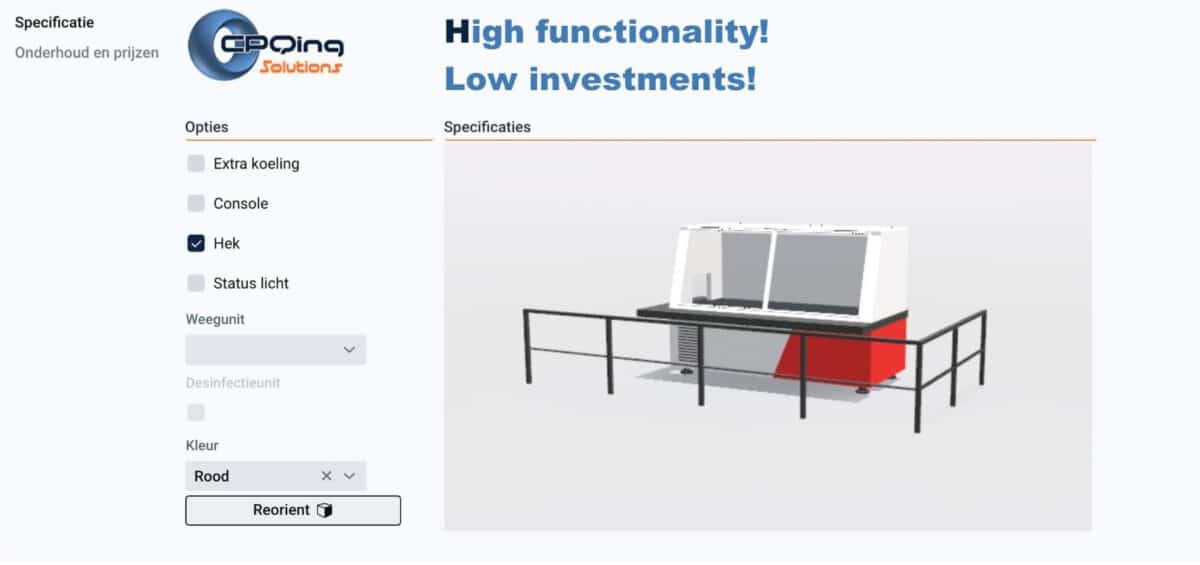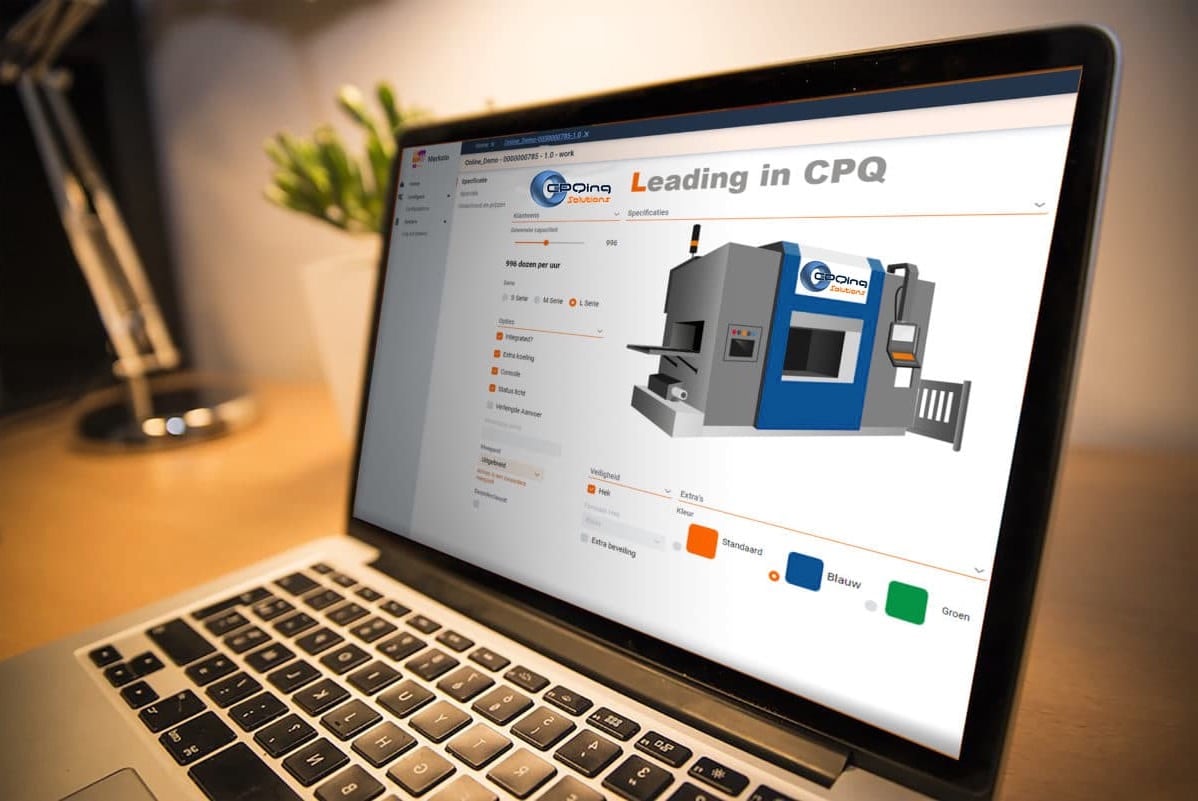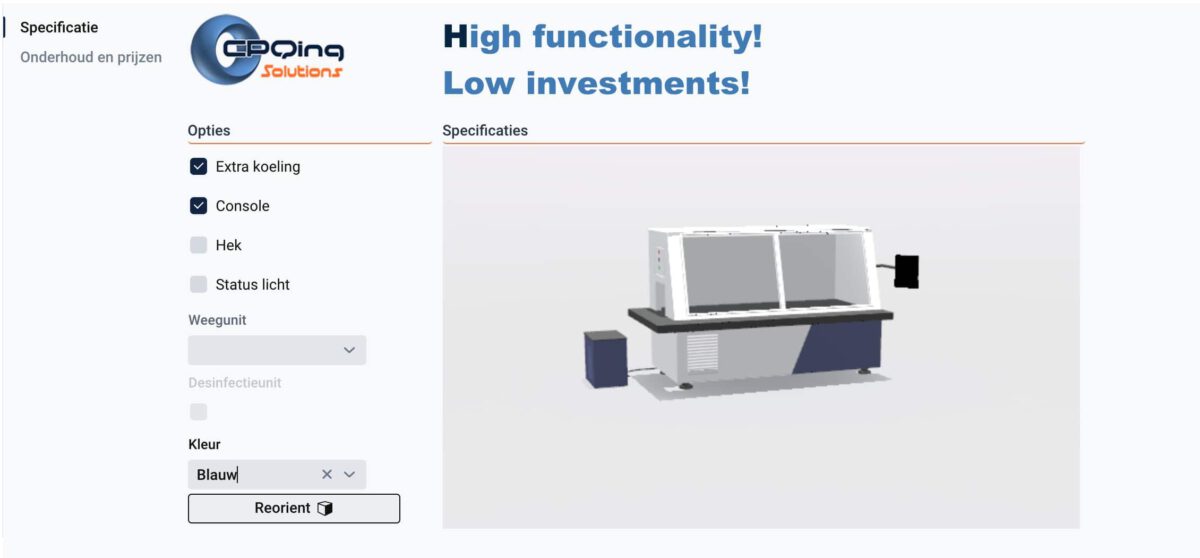A configurator allows your customer to customise products/services
Simply put, a product configurator is a software application that enables your customers to configure their ideal product or service themselves, both online and offline. Yet, they can do so only within the boundaries that you yourself have specified by means of knowledge rules. This way you can rest assured that the product that the customer configures can actually be produced. A large benefit for your customers is that they themselves influence the final product and can reflect their own taste or needs, using a visual configurator where the available options can be chosen. In this way, you enable customers to choose from different colours, materials or accessories. Even implementing complicated product variations is possible within a product configurator. The customer can immediately see the consequences of his or her specific choices on the product, the price or even the delivery time.
The added value of a product configurator
Using a product configurator can have value for both the customer and the selling party. Offering modular or tailor-made products creates an opportunity to communicate better, faster and more directly with customers. This personalized experience ensures a higher involvement of the customer, which in many cases will increase conversions and sales.
Another big benefit is that making quotes becomes a lot easier. Instead of your employees manually preparing quotes and specification lists, the product configuration software automates the process, reducing quote preparation time from a few hours to minutes. This speeds up the entire sales cycle and, in addition to the quotation document, can draw up a production order immediately so that what has been quoted is always produced. A configurator removes the margin of error and enables you to make 100% correct offers. So if you offer customized or configurable products, a product configurator is almost necessary.
The differences between product configurators
A configurator therefore guides customers through the purchasing process and in the meantime provides them with the necessary tools and choices to successfully complete an order (or request for a quote). But just as there is a difference in the products that can be offered via a configurator, there is also difference in the type of product configurators. To keep it clear, we divide the possible types into two categories; the sales configurator and the 3D product configurator.
In this blog we take a closer look at the differences.

Sales configurator
A sales configurator uses 2D product visualizations or ‘regular’ images to visualise the configured product. It uses ‘flat images’, which the customer cannot manipulate. If adjustments are made to the product, for example the color is adjusted, a different image will be loaded. Depending on the recorded static images, the user can’t rotate the product to view it at a different angle. Very often this suffices to make the right choice. It strongly depends on the targeted user: if the configurator is only used by the internal organization for sending quotations, the extra costs generally do not outweigh the extra functionality.
3D product configurator
As the name suggests, 3D configurators do offer the possibility to get a full view of the product, which means that a 360º view of the product can be offered. It offers customers a unique and interactive experience, which at the same time provides an excellent and complete insight into what the final product is composed of. 3D configurations are therefore ideal for products where the customer experience plays a decisive part in their purchasing choice.
The benefits are endless
Implementing a configurator is different for each company and may vary by industry. However, some benefits are the same for any company in any industry, regardless of the application:
- Visual purchasing guidance for customer;
- Professional appearance;
- Guaranteed correct offers (quotations always feasible);
- A continuous and instant insight into all standards and limitations of all offered products or services;
- Complex products are displayed simply and clearly;
- Full control over the content of the quotation document;
- Possibility to configure (and sell);
- Turnaround time is significantly reduced (from quotation to production);
- Less cost of failure;
- Easy to expand;
- Direct insight into costs and production times of variations.
Do you also want your construction supply company to be able to use all the benefits of a configurator soon? Then feel free to contact us to discuss the possibilities, or experience the convenience it brings with your own demo environment.

The CPQing product configurator
CPQing Solutions uses the best rules engine available in the market at a competitive rate. Thanks to our many years of experience with product configurations, we work by the motto: “We already have solutions for problems you haven’t yet thought about”. We are therefore confident that our configurator can handle all complexities your products and pricing rules contain. We can handle them, with an implementation of weeks, not months. Product and price rules are recorded in so-called ‘decision tables’. This makes setting up the configurator very clear to understand. Not only when products and services have few variants and options, but also for companies with greater production complexity.
The people working within your company know what information is needed to sell products and services. In setting up the CPQing Configurator, we feel it is these people who should be able to safeguard their knowledge within the configurator. No IT knowledge is required to successfully set up CPQing.



